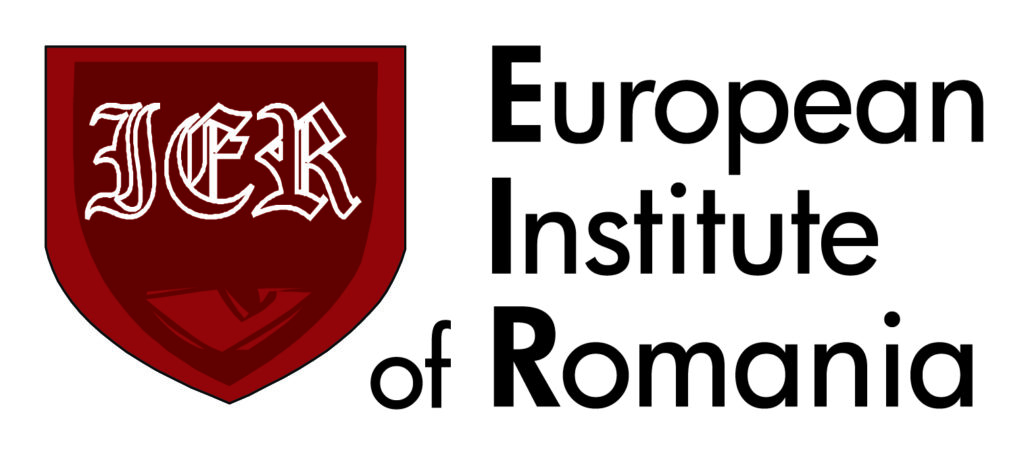Changes in personnel arrangement and economic policies are widely considered as most important elements in watching the 20th Chinese Communist Party’s National Congress. In his political report, Xi strongly emphasized the importance of strengthening science, technology, and innovation to deal with the geopolitical risks when facing the external unstable environment. Although the 20th report did not mention the United States, the this part was obviously about the strategic competition between the U.S. and China.
In the US-China competition, Taiwan becomes a key front line. China is making efforts to accelerate the recruitment of talents from Taiwan while the U.S. has a vested interest in courting TSMC to take part in the Chips Act and to build a foundry in the United States.
In addition, politically, China has strong economic and political motivations for signaling its intentions of pursuing “reunification,” that is, taking over Taiwan and the chips industry. As the leader of semiconductor technology, Taiwan will assist the United States in building supply chain security to earn more time for dealing with the threat from China, or become the breach of technology outflow, depending on whether Taiwan’s technological superiority can be properly embedded in the transnational supply chain.
The CPC 20th Congress heralds a new age for US-China-Taiwan relations. The following are five key issues to watch out for after the Congress and in Xi’s political report.
The End of Institutionalized Political Collective Leadership
The members of the Poliburo Standing Committee (PSC) of the CPC Central Committee elected are Xi Jinping, Li Qiang, Zhao Leji, Wang Huning, Cai Qi, Ding Xuexiang and Li Xi. In the past, the CPC followed the practice of “seven ups and eight downs(七上八下)” in the highest-level of personnel appointment, which means a member above 68 must retire, while those in their 67 or under can stay in the PSC.
However, Li Keqiang (李克強) and Wang Yang(汪洋), 67 years old, with Youth League faction (共青團) background failed to stay in the PSC, which means the implicit age rule has been abolished. Meanwhile Vice Premier Hu Chunhua(胡春華), former first secretary of the Communist Youth League (CYL) Central Committee Secretariat, will also step down and take a backseat as he was elected to the Central Committee but not the Politburo. The Communist Youth League, the Party’s reserve team, has been excluded from the regime’s ruling body.
On the other hand, Li Qiang (李強), 63years old, is known for overseeing Shanghai’s harsh COVID-19 lockdown, was promoted into the second rank in the PSC, which seems to suggest that loyalty to Xi becomes the only criterion of being selected to the PSC. Furthermore, not surprisingly, Xi, 69, breaks the age cap of 68 en route to a precedent-breaking third term in office, making him the most powerful Chinese leader since Mao Zedong.
The PSC of the CPC is the apex of power for the CPC and China’s supreme decision-making body. The decisions made in the PSC shape China’s future policy trajectory and give signals about the extent of Xi’s concentration of power and his future plans. Xi secures full powers after 20th Congress of the Communist Party Xi might run into the mistake of pursuing extreme policies with unchecked power such as nationalistic foreign policies and the zero-COVID policy.
Technological self-sufficiency
Although there is no mention of a word for the US, the entire report in XI’s speech implied his critics to the U.S.’ bulling. This is particularly true when it comes to Xi’s stress of improving scientific education and grooming and attracting the necessary talent to accelerate China’s quest to achieve breakthroughs in semiconductor production and overcome development choke points created by Western technological monopolies. Indeed, Xi’s political report noted that China’s supply chains need to become more “self-determined and self-controlled, reflecting Beijing’s deep anxieties about high-tech development and its frustrations with dependence on overseas suppliers vulnerable to the vagaries of geopolitical tensions.”
China’s push for technological self-reliance is intensifying because of the weakening of key export markets and the ratcheting up of geopolitical competition with the U.S. For instance, in 2020, the “14th Five-Year Plan (第14個五年計畫)” mentioned that the annual average increase in R&D budget is greater than 7%, which even exceeds the budget of military. Similarly, “Self-reliance of science and technology (科技自立自強)” appeared 5 times in the 20th report.
Despite China’s effort to pursue technological self-reliance, the U.S. is expected to expand stringent export controls to more industries that China considers strategic, which will make it extremely difficult and costly for Xi to develop indigenous innovation capacity in China. The U.S. Bureau of Industry and Security announced a new ban on exporting semiconductor tech to China on August 12, 2022, including specific electronics design automation (EDA) software for making 3nm and more advanced chips. The banned EDA software for gate-all-around field effect transistor (GAAFET) is the next-generation semiconductor tech that can help chips achieve a higher frequency and lower power consumption.
The top three companies—Cadence (American), Synopsys (American), and Mentor Graphics (American but acquired by the German company Siemens in 2017)—control about 70% of the global EDA market. Huada Empyrean, whose founder has worked in EDA design since the 1980s, is the country’s current leader in China domestic EDA software, but it only accounts for 6% of the domestic EDA market. EDA software forms the latest battle front in the tech trade war between China and the United States and is a small but mighty part of the semiconductor supply chain, and it’s mostly controlled by three Western companies. That gives the US a powerful point of leverage.
Taiwan is a key front line in the U.S.-China tech rivalry
How will China take up the challenge from the U.S.? There are three ways:
- China is likely to accelerate the recruitment of talents fromsurrounding countries, such as Japan, India, South Korea and Taiwan.
- In terms of technology, China will develop advanced AI chips and computing by quantum computers and advanced packaging technologies.
- China may accelerate the merger of European semiconductor fabrication plant. The White House chokehold attack came quickly and violently, but it may become a catalyst for China to accelerate its semiconductor development.
Taiwan has technology and maintenance talents related to semiconductor equipment who can develop advanced manufacturing processes. In the past decade, China has provided high salaries to attract Taiwan’s tech talents to accelerate their development.
The most critical talents are the middle and senior executives who master the know-how of advanced manufacturing processes and understand how to implement them. China especially tried to offer a huge amount of funding to lure Taiwan start-ups that lack funds. But after going to China, these start-ups are asked to make their products in China, and leave all the patents to China.
The U.S. has escalated the tech competition with China. The President Joe Biden signed into law the Chips and Science Acton August 10, which authorised about $52 billion in government subsidies for U.S. semiconductor production and research, as well as an investment tax credit for chip plants estimated to be worth $24 billion.The subsidies are expected to be made available to not only the U.S. manufacturers of chips, like Intel, but also foreign companies such as TSMC which set up foundries in the U.S. and make the chips there. They will presumably not only ensure a steady and uninterrupted supply of chips for the U.S. consumers but also hire American workers to work in the fabs.
Taiwan is highly embedded in the economic and trade network between the United States and China, which makes a complicated triangular relationship. Taiwan faces a tougher situation – sandwiched between its largest export market China and its main international backer and arms supplier, the United States – especially as Beijing steps up military pressure to force Taipei to accept Chinese sovereignty claims. As the leader of semiconductor technology, Taiwan should create its own semiconductor manufacturing equipment sector to earn more time for the threat from west, and avoid becoming the breach f technology outflow to China.
Economic policy in the Political Report: security, self-reliance and political regime
China is facing exceptional economic challenges from, for example, the effects of its ‘dynamic zero-COVID’ policies, the real-estate bust, stalled productivity growth and high-income inequality. Worsening the U.S.-China relations and tightening access to overseas markets for Chinese companies have prompted party leaders not only to reconsider the country’s sources of economic growth but have also forced them to reconfigure their approach to foreign affairs.
The renewed mention of Xi’s ‘dual circulation’ (雙循環)[1]strategy in the political report signals that Beijing is indeed turning to domestic consumption and homegrown technological prowess as the means to provide the rising wealth that the Chinese people have come to expect from the Communist Party. The prime keyword was security, with some 73 mentions in the report, underscored with a message of self-reliance.
As China’s economic growth slows down, Xi attempts to transfer the basis of legitimacy from economic to security to sacrifice its economy for political gain.
An extraordinary shift in governance and regulation has taken place under Xi in the wake of what former Australian prime minister Kevin Rudd has called China’s lurch ‘to the Leninist left in politics, the Marxist left in economics, and the nationalist right in foreign policy’. The domestic manifestations of these changes include greater emphasis on the primary role of the already prominent, but less efficient, state sector, and attempts to use regulation and coercion to bring private firms and entrepreneurs to heel politically.
Chinawill speed up unification plans with Taiwan
Xi Jinping’s opening speech at the CPC 20th National Congress signaled a fundamental shift in Beijing’s Taiwan policy, with cross-Taiwan Strait relations now becoming an integral part of the China-United States rivalry and Taiwan was now a top priority for Xi after resolving the Hong Kong issue with the newly implemented National Security Laws. Xi also repeatedly highlighted the importance of stopping “interference by outside forces and the few separatists seeking ‘Taiwan independence’ and their separatist activities.”
Xi’s comments show the centrality anti-Taiwan independence and anti-outside forces interference following the U.S. House Speaker Nancy Pelosi’s August visit to Taiwan and the recently proposed Taiwan Policy Act (TPA).
Xi’s third term will speed up unification plans with Taiwan and he also said that “we will never promise to renounce the use of force, and we reserve the option of taking all measures necessary. ”Many China watchers consider institutionalization as the key to China’s political stability at the elite level since the 1980s. Xi is the first leader since 1978 not to be constrained by powerful elders in the CPC. Xi’s constitutional amendment in 2018, paving the way for his incoming third term as CPC general secretary and China’s president, and by power consolidation and the anti-corruption campaign to centralize state power, demonstrate that no senior figure can constrain Xi’s attempt to obstruct party norms. So Xi does not need to solve the Taiwan issue to maintain political stability, so it is unlikely that China will invade Taiwan by force anytime soon.
Conclusion
After Mao Zedong died, Deng Xiaoping and his colleagues sought to prevent “the overconcentration of power” by introducing fixed terms of office, term limits, and a mandatory retirement age. Regular premortem leadership succession was a rare achievement in a communist system and the most important source of China’s “authoritarian resilience.” Yet today, Xi Jinping is taking China back to a personalistic dictatorship after decades of institutionalized collective leadership. With no institution outside the CCP able to check the behavior of Party leaders, this duty falls to the collective institutions of the Party, in particular the Central Committee. The greater risk to China, and to the world, is the poor decision making that may result from the excessive concentration of power in Beijing.
In the world arena, meanwhile, the constraints on Xi are weakening amid declining U.S. credibility and influence. The risks posed by Xi’s over-concentrated power are not confined within China’s borders, but extend to the world beyond. Xi Jinping has pursued national security and stability over growth, it will affect the economic development of the world. Xi’s arbitrary and imprudent decisions taken during a crisis involving the East or South China Seas, the Korean Peninsula, or Taiwan could escalate into a war.
Photo: metrotrekker.com
[1] Xi Jinping called his new economic policy plan the “double cycle” strategy. It means thattakes domestic demand and innovation as the main driving force for economic development.
IF YOU VALUE THE INSTITUTE OF NEW EUROPE’S WORK, BECOME ONE OF ITS DONORS!
Funds received will allow us to finance further publications.
You can contribute by making donations to INE’s bank account:
95 2530 0008 2090 1053 7214 0001
with the following payment title: „darowizna na cele statutowe”

































Comments are closed.